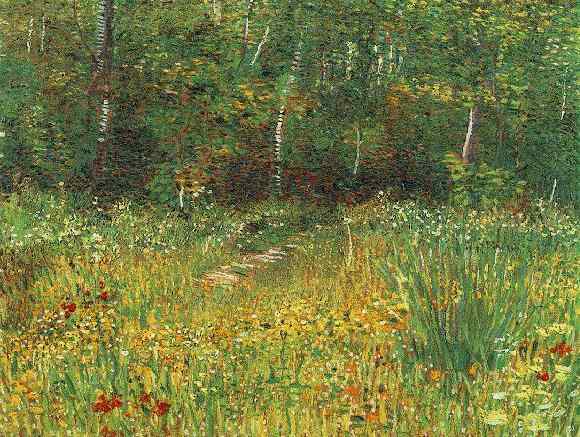∞
Composed of five long "books," the Torah can be an imposing read. Furthermore, it is complex, combining many types of literature, including historical narrative, poetry, genealogy, case law, and speeches. In this study, I hope to give some helpful "big picture" points that will help us keep the forest in mind once we start walking through the trees.THREE BIG STORIES
- Genesis 1-11: The Beginning. The story of creation, early life in the land, and the scattering of the nations before God called Abraham.
- Genesis 12-Exodus 19: The People. The story of Abraham's family from his calling to their enslavement in Egypt, to the Exodus, to their establishment as a nation at Mt. Sinai.
- Exodus 19-Deuteronomy: The Law. The story of Israel receiving the Law at Mt. Sinai, wandering through the wilderness, and the new generation being instructed as they prepare to enter the Promised Land.
This leads to our second observation.
TWO MAIN BIOGRAPHIES
- Abraham pictures the life of faith before the Sinai law covenant.
- Moses ultimately pictures the life of failure under the Sinai law covenant.
Before the Law, Moses is also portrayed as a man of faith, through whom God worked signs and wonders to produce faith in the Hebrews (Exodus 4.29-31). However, under the Law, the great prophet was finally prevented from entering the Promised Land. Why? Because of his unbelief (Numbers 20.12).
The Torah is making an all-important point that is only fully developed in the N.T. by the Apostle Paul in letters like Galatians and Romans: The Law cannot save, for it produces sin and unbelief. It is only by God's grace through faith that people are counted righteous before God.
THE FUTURE HOPE
Each of the first four chapters of Genesis is organized in the following pattern:
- A detailed historical narrative
- A poem or poetic speech emphasizing a climactic theme
- A conclusion or epilogue
When Sailhamer stepped back and surveyed the entire Torah (Gen-Deut), he found the same pattern on a macro-level.
Part One—Genesis (from Creation to Egypt)- Genesis 1-48. Narratives of the beginning and the patriarchs
- Genesis 49. Poetic blessing speech by Jacob
- Genesis 50. Conclusion: Jacob's death, Joseph & his brothers, the family in Egypt
- Exodus, Leviticus, Numbers 1-21. Narratives of Israel, the law, the wilderness
- Numbers 22-24. Balaam's poetic oracles
- Numbers 25-26. Conclusion: The unfaithfulness of Israel and final census
Part Three—Deuteronomy (Preparing to enter the Land)
- Deuteronomy 1-31. Sermons of Moses to the new generation
- Deuteronomy 32-33. The poetic song and blessing of Moses
- Numbers 25-26. Conclusion: The death of Moses
Furthermore, each of the poetic speeches on the macro-level is introduced in the same fashion.
- A significant character gathers others around him before an important event
- He speaks to them about what will happen "in the latter days"
The Torah begins with the words, "In the beginning...." Each major section ends with an address about "the latter days," a time beyond the circumstances of the characters in the story. The Torah is eschatological in nature, which means it is pointing us beyond itself and the events it portrays to God's future.. The "answers" it gives about how God restores his blessing to a fallen world in the grip of sin, evil, and death lie in the future. And note how that future hope is presented:
Genesis 49.10
The sceptre shall not depart from Judah,
nor the ruler’s staff from between his feet,
until tribute comes to him;
and the obedience of the peoples is his.
Numbers 24.17-19
I see him, but not now;
I behold him, but not near—
a star shall come out of Jacob,
and a sceptre shall rise out of Israel;
it shall crush the borderlands of Moab,
and the territory of all the Shethites.
Edom will become a possession,
Seir a possession of its enemies,
while Israel does valiantly.
One out of Jacob shall rule,
and destroy the survivors of Ir.
Deuteronomy 32
Rejoice, O nations, with His people;
For He will avenge the blood of His servants,
And will render vengeance on His adversaries,
And will atone for His land and His people.
The sceptre shall not depart from Judah,
nor the ruler’s staff from between his feet,
until tribute comes to him;
and the obedience of the peoples is his.
Numbers 24.17-19
I see him, but not now;
I behold him, but not near—
a star shall come out of Jacob,
and a sceptre shall rise out of Israel;
it shall crush the borderlands of Moab,
and the territory of all the Shethites.
Edom will become a possession,
Seir a possession of its enemies,
while Israel does valiantly.
One out of Jacob shall rule,
and destroy the survivors of Ir.
Deuteronomy 32
Rejoice, O nations, with His people;
For He will avenge the blood of His servants,
And will render vengeance on His adversaries,
And will atone for His land and His people.
The Torah points its readers forward to the coming of the Lion of Judah, the rightful Ruler, the Royal Star who will rise to defeat God's enemies and rule over all. The Torah points to the day when God will call all nations to rejoice with his people in his righteous judgment and the atonement he has made for them.

